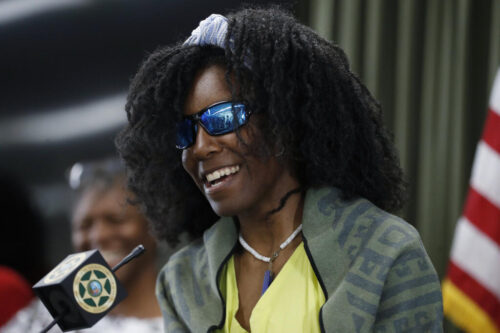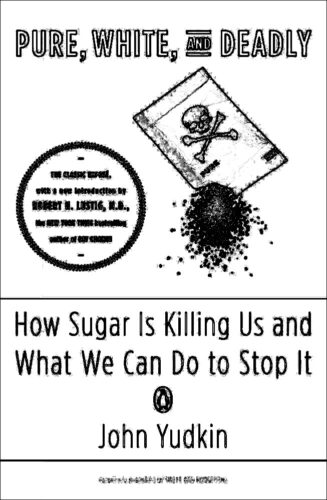
Special forces around the world will be studying lessons learned in this story of one woman’s ingenuity and perseverance in extreme conditions.
Soon into her trek, Slaton recounted falling off a cliff and getting knocked unconscious. When she came to, she had to pop her knee back in and make a splint for her leg. Slaton said she couldn’t make it back to the road, blocked by the avalanche she determined she had been in, and attempts to call 911 failed. Her phone, however, could route her to Starbucks, the nearest one being 18 miles away.
“You can’t get me 911, you can’t get me GPS, but you can get me a Starbucks?” Slaton said. “… In doing so, I ended up on this very long, arduous journey that I journaled to try and keep sane.”
That’s an algorithm for you. Some clever programmer wrote her results to skew towards consumption patterns, regardless of inputs, probably because of ad revenue bias.
Sounds like 911 needs to start offering Starbucks in the ambulance, maybe put some Chipotle in there too, just so the American capitalist “what’s in it for me” system will bother to make its emergency services available.
When you dial, maybe it could offer “press 1 for a hot cup of fresh coffee, press 2 for a lovely burrito, press 3 for pancakes… and, if you are still there after 9 wonderful opportunities to buy something special for you or those around you, press 0 to state your emergency.”
Just think of those revenue possibilities from people desperate for help. See how being a Big Tech engineer works? No ethics required, unlike any other engineering field in the world.
The avalanche area she mentions is very familiar to me from my own time in those Sierras, above Huntington lake (where at least one crashed WWII B-24H Liberator has been preserved under icy waters). Mono Hot Springs (abandoned settlement) indeed is a very remote area, although tiny roads snake upwards towards… the odd empty cabin.
Slaton somehow made it past the hot springs on her own. She went farther northeast, up to Kaiser Peak at an elevation of more than 9,000 feet, and left her bike buried in the snow at a trailhead, according to the Fresno County Sheriff’s Office. Then, a blizzard hit the area.
“I only saw white upon white in that storm,” Slaton said. As she approached the cabin where she would be found, she saw a “pristine Christmas tree and a tiny house and it had markers like Santa’s sleigh, and I could not understand. I actually thought I was losing my mind at that point, that I had somehow managed to make it to the North Pole.”
Slaton was ultimately found the next morning about 40 miles, or a two-hour drive, farther east than where she was last seen at Shaver Lake.
The cabin owner said it took him a day just to hack his way in through the whiteness. When he opened the door did she say “how ice to see you”?
She had only been in the cabin about eight hours of her three week ordeal, so it’s notable that she glowingly credits the hut with her entire outdoor survival. I’m sure it felt that way, while she knows it isn’t true. Such clever modesty is duly noted, and most people will miss the point entirely: she used hope of a cabin as a step, a small mental tactic to maintain focus, not actually relegating responsibility.
But seriously this woman should be training people on survival. This is such a better story than almost all the others we are trained on. Her 3 Weeks over 40 miles wearing a splint, through 13 Blizzards, is an amazing inspiration to anyone whose job is to survive extremes.
She’s a trained forager and permaculturist, and leeks are both bountiful in the Sierra and nutritious. So nutritious that her bloodwork was in remarkable shape at the hospital, she said during a press conference on Friday. Her eyes, however, took some damage from an extended time in the blinding white snow, requiring sunglasses in the aftermath.
The important power of leeks. The danger of blinding whiteness. The latter is definitely is not to be underestimated. Both have a familiar ring to anyone working in national security.
I always find it interesting when Americans tell me they don’t know the history of the real Wonder Woman (Nieves Fernandez) who inspired the comic book superhero. I see some parallels here.
Also find it interesting how blizzards and deserts never made the English security phrases “white list” or “white box” a negative connotation. I’ve survived the most extreme conditions in both and I always reflect on blinding whiteness being highly undesirable if not deadly. Whiteness seems like death, in many cultural representations. Yet in tech we frequently hear about black list and black box as unfavored, rather than the more naturally preferred, state of being. Perhaps her story, far more grounded as a hiker than the usual remote summit story, also will help readjust security language and perceptions of danger from whiteness.
